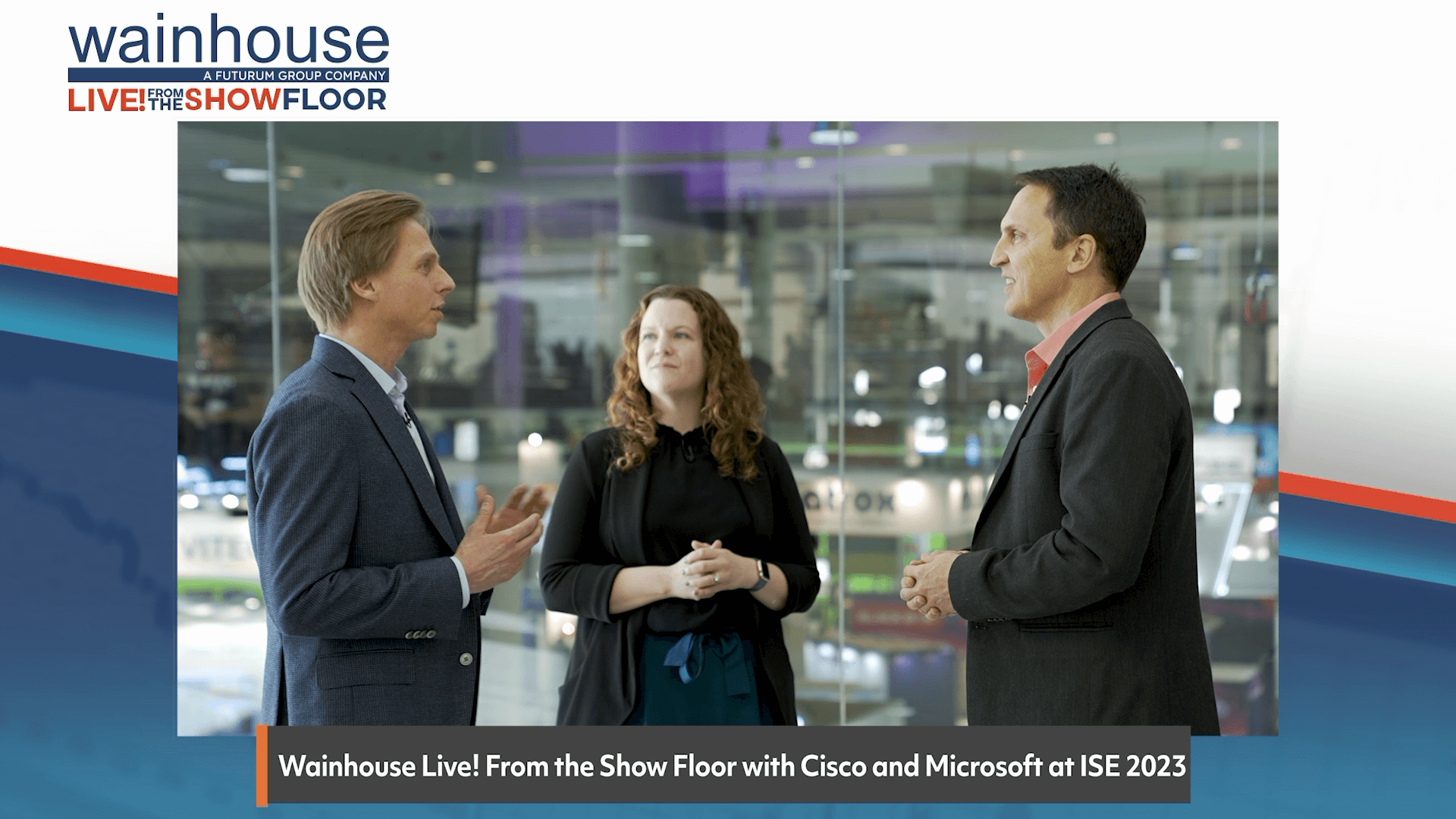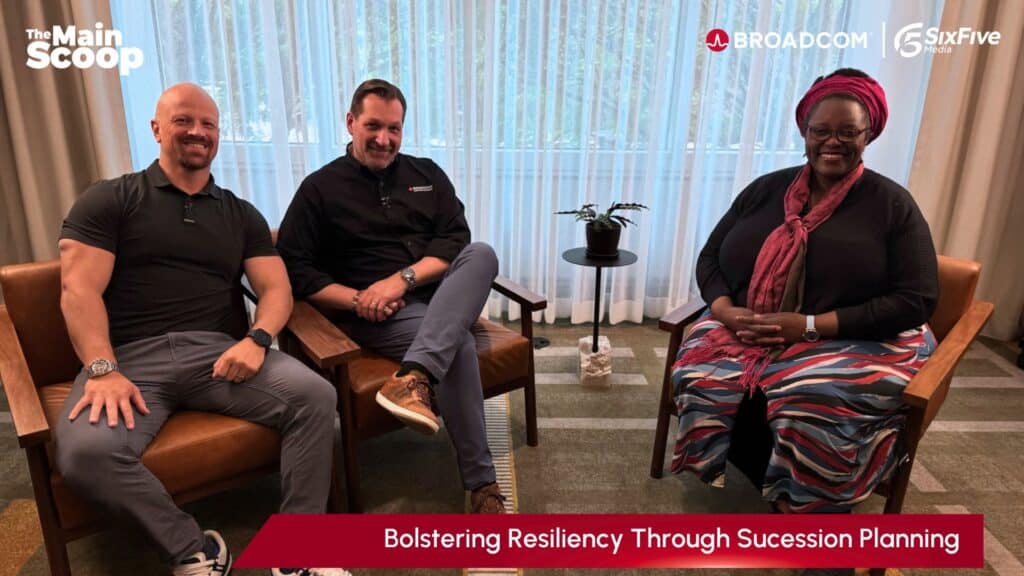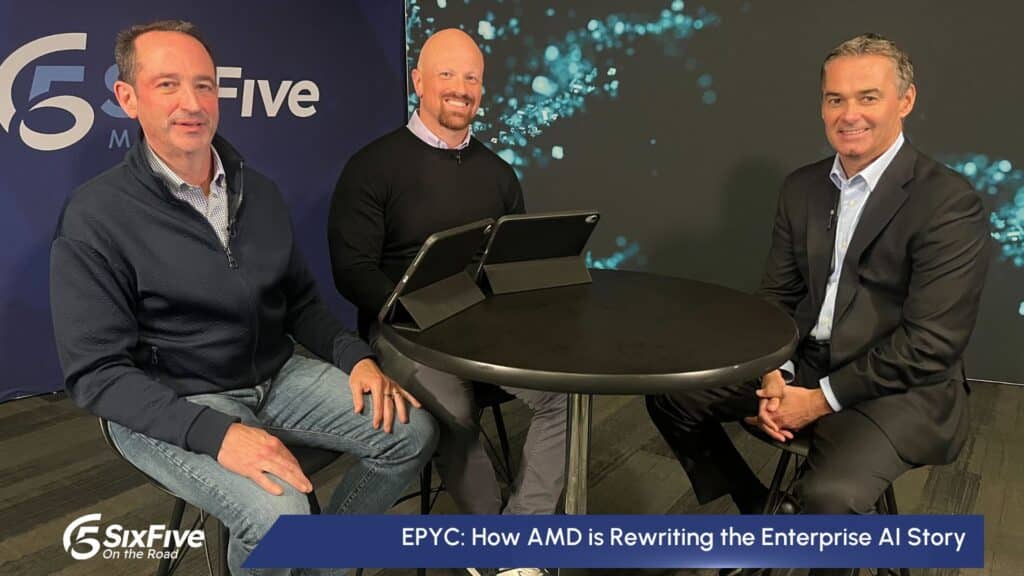Wainhouse Senior Analyst Craig Durr is joined by Cisco’s Espen Loberg, VP of Product Management for Cisco Collaboration Devices, and Caroline Stanford, Director of Product Marketing for Microsoft Teams, to talk about the exciting new integration of Microsoft Teams with Cisco Collaboration devices – a promising innovation that provides seamless collaboration for users across platforms and workspaces.
Be sure to subscribe to the Wainhouse Webcast so you never miss an episode.
Watch the episode here:
Disclaimer: The Wainhouse Research Webcast is for information and entertainment purposes only. Over the course of this webcast, we may talk about companies that are publicly traded and we may even reference that fact and their equity share price, but please do not take anything that we say as a recommendation about what you should do with your investment dollars. We are not investment advisors and we do not ask that you treat us as such.
Transcript:
Craig Durr: Hey, this is Craig Durr with Wayne House Research. We’re here live with the interview that I’m really excited to bring to you today. We’re going to be talking to two titans of the unified communications industry. It’s often that you get them in the same conversation. But we have a special opportunity to talk here today. We’re glad to bring this to you. People I want to introduce you to… Espen Loberg, VP of product management for Cisco Collaboration Devices, Caroline Stanford, director of product marketing for Microsoft Teams. My friends, welcome.
Caroline Stanford: Thank you. Thanks for having us.
Espen Loberg: Thank you.
Craig Durr: We are here to talk about one of the biggest product innovations I thought came out in 2022. This is the idea: the collaboration taking place between Cisco devices and Microsoft Teams. Now, this product is, now, finally hitting the street and getting into customers’ hands. I’m really excited to have a chance to see this right now. But Espen, do me a favor. Walk me through what’s going on here.
Espen Loberg: Absolutely. Craig, as we exited the pandemic, we saw a lot of interest from our customers investing in high-quality inclusive solutions for hybrid work. At the same time, in Enterprise, we also saw that there was a lot of customers that tried to bring the Microsoft Teams environment and the Cisco collaboration devices environments together. As organizations saw increased adoption of Microsoft Teams, they really asked us for a solution that could bring that native teams integration to their meeting rooms. At the same time, they were also really wanting to protect the high-quality device experience and industry-leading management experience that Cisco is bringing to the table. Basically, they were asking us very nicely, a lot of our customers, “Can you please bring these experiences together?” That’s why we’re here today. This is really the coming-out party for Microsoft Teams Rooms on Cisco devices.
Craig Durr: What fantastic customer feedback! Now, Caroline, are you hearing similar information from your customers as well?
Caroline Stanford: Yes. As you heard from Espen, there’s just been an enormous growth of use from Microsoft Teams over the past several years. We announced recently that we’ve passed 280 million users for teams. More than half a million Teams Rooms are active at this point. The growth in the use of the platform has been very high. But our customers have repeatedly asked us for flexibility to use the devices that they know and love, so to use the incredible portfolio that’s coming from Cisco’s collaboration devices. We’re thrilled to be able to meet them with that need while still providing the team’s experience that they’ve come to know and love and count on.
Craig Durr: Okay, good. Now, this idea of a native Teams experience is unique. I know you’re very excited about this. Espen, can you tell me what is unique about this that we’re seeing here in this product combination?
Espen Loberg: Yeah. What’s unique about what you’re seeing here at this show this week is that we’re demoing for the first time to the world, the Microsoft Teams experience natively on our room bar and on our Cisco Board Pros, as well as our Desk Pro collaboration device for home offices. What’s really unique about this integration that we’ve done is that it’s building on top of our secret sauce RoomOS that has a lot of magical capabilities, a lot of AI included. What we’re able to do with that is that even if you have the device in native Teams Rooms experience and have that as your home screen, if you want to join a WebEx meeting, there will be a green button on the device, a join button, and that will take you to a native WebEx experience for your WebEx meetings.
Craig Durr: A native WebEx experience. Now that really intrigues me. What does that mean? Help me understand this.
Caroline Stanford: Yeah. If the customer is configuring the device as a native Microsoft Teams Rooms, then they have the interface that they know and love and are used to for Microsoft Teams. But as you heard, if they want to then join a WebEx meeting, they get to have the best of both worlds because they’re then taken to that full native experience for WebEx for the meeting itself, which is just an incredible opportunity for them to, like I said, get both experiences that they want, Teams as their primary native login and then switching to WebEx for the meeting.
Craig Durr: Right. We’re back to the problem that we were talking about in the very beginning. You basically have solved that problem where customers have these multiple mixed environments.
Espen Loberg: Yeah. Our internal research shows that 85% of enterprise customers out there are supporting, in their IT organizations, two or more meeting services. This is really a problem that is ripe for solving. With this industry-first approach between Microsoft and Cisco, we’re able to give customers the best of both worlds. The end users are able to join meetings back to back without having to reboot or reconfigure their devices.
Craig Durr: Are there some other ideas that you want to share on this?
Caroline Stanford: No, I think it’s great, though, that the customers who do choose this solution can leverage both administration of their devices through Microsoft Teams, through our admin console, and if they’re running Microsoft Teams Rooms Pro, then also through the Pro Portal. But they can also use the Control Hub functionality from Cisco.
Craig Durr: All the value and benefit that Control Hub brings to these enterprise environments with all the other Cisco touchpoints that may take place in the environment.
Espen Loberg: Yeah. This means that the customers can manage their Microsoft Teams Rooms as well as, let’s say, their Cisco IP phones or other parts of the WebEx suite from the same admin console. It also means that they can use Control Hub to better understand their hybrid workspace environment with all the analytics taken from or pulled from the sensors in our devices so that they can continue to tune, together with HR and facilities, the acceleration of their ecosystem. I have to also mention one more thing because it’s not only about the Rooms devices. We are also announcing here and showing off our first Microsoft-certified peripherals with headsets and our 4K webcam that you can also manage in the same interface.
Craig Durr: I personally love that web camera. That’s the one I use in my home desktop setup right now as well. It’s a fantastic camera. I really enjoy it. What I really like about this here is that it’s the customer that wins.
Caroline Stanford: Absolutely.
Craig Durr: Whatever choices they make, they’re the ones that are being put first. That’s a fantastic idea. Well, thank you, guys, so much. Hey, I appreciate you guys tuning in for this interview. If you have a chance, please make sure you do check out this solution that’s in market right now. Thank you so much for your time.
Author Information
As Practice Lead - Workplace Collaboration, Craig focuses on developing research, publications and insights that clarify how the workforce, the workplace, and the workflows enable group collaboration and communication. He provides research and analysis related to market sizing and forecasts, product and service evaluations, market trends, and end-user and buyer expectations. In addition to following the technology, Craig also studies the human elements of work - organizing his findings into the workforce, the workplace, and the workflows – and charting how these variables influence technologies and business strategies.
Prior to joining Wainhouse, now a part of The Futurum Group, Craig brings twenty years of experience in leadership roles related to P&L management, product development, strategic planning, and business development of security, SaaS, and unified communication offerings. Craig's experience includes positions at Poly, Dell, Microsoft, and IBM.
Craig holds a Master of Business Administration from the Texas McCombs School of Business as well as a Bachelor of Science in Business Administration from Tulane University.





